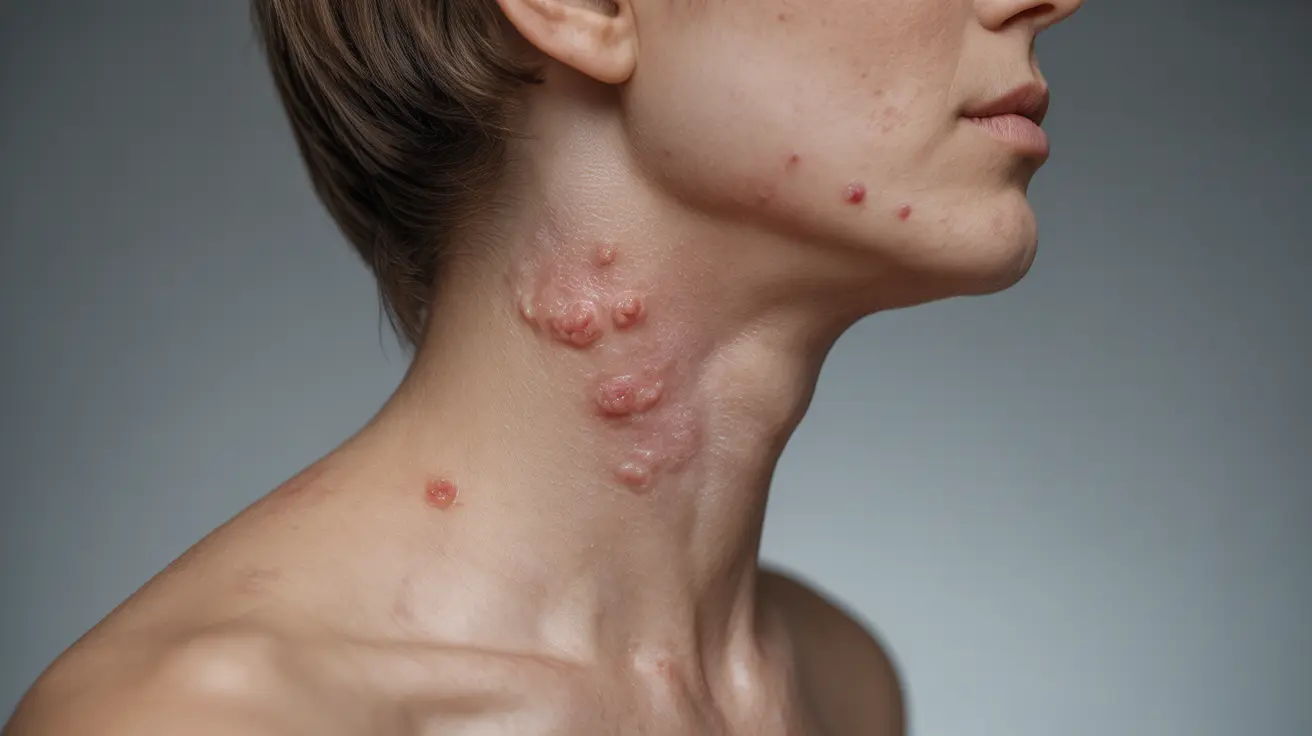Hidradenitis suppurativa (HS) affecting the neck area can be particularly challenging and distressing for those who experience it. This chronic inflammatory skin condition causes painful bumps, abscesses, and in some cases, scarring in areas where skin rubs together, including the neck region. Understanding the specific characteristics and management strategies for neck-related HS is crucial for effective treatment and improved quality of life.
When HS develops on the neck, it can significantly impact daily activities and social interactions. The visible nature of neck lesions often leads to emotional and psychological challenges alongside physical discomfort. Early recognition and proper management are essential for preventing disease progression and maintaining skin health.
Understanding Neck-Related Hidradenitis Suppurativa
Hidradenitis suppurativa on the neck typically begins as tender, red bumps that may resemble acne or boils. These lesions commonly appear in areas where skin friction occurs, such as the nape of the neck or where clothing regularly rubs against the skin. The condition can progress to form deeper, more painful abscesses that may eventually connect through tunnels under the skin.
Common Characteristics of Neck HS
- Painful, inflamed nodules or bumps
- Recurring abscesses in the same areas
- Development of tunnel-like tracts under the skin
- Scarring from healed lesions
- Persistent or recurring inflammation
- Discharge or drainage from affected areas
Diagnosis and Risk Factors
Diagnosis of neck HS typically involves a physical examination by a dermatologist who will evaluate the pattern and severity of lesions. The presence of recurring inflammatory nodules, abscesses, or scarring in characteristic locations helps confirm the diagnosis. Early diagnosis is crucial for preventing disease progression and minimizing scarring.
Key Risk Factors
- Family history of HS
- Obesity or excess weight
- Smoking
- Hormonal changes
- Certain medical conditions
- Mechanical friction from clothing or accessories
Treatment Approaches
Treatment for neck-related HS typically involves a multi-faceted approach, combining various therapeutic options based on disease severity and individual patient needs.
Medical Treatments
- Topical antibiotics to control infection
- Oral antibiotics for more severe cases
- Anti-inflammatory medications
- Hormone therapy in certain cases
- Biologics for severe or resistant cases
- Steroid injections for acute flares
Surgical Options
In some cases, surgical intervention may be necessary, particularly for severe or persistent cases. This might include:
- Incision and drainage of acute abscesses
- Excision of affected tissue
- Deroofing procedures
- Laser therapy for recurrent lesions
Lifestyle Management and Prevention
Managing HS on the neck often requires lifestyle modifications and preventive measures to reduce flare-ups and maintain skin health. Regular cleaning with gentle, non-irritating products, wearing loose-fitting clothing, and avoiding triggers can help minimize symptoms. Weight management, smoking cessation, and stress reduction may also contribute to better disease control.
Frequently Asked Questions
What are the symptoms of hidradenitis suppurativa on the neck, and how is it diagnosed? Symptoms include painful bumps, recurring abscesses, and potential scarring on the neck area. Diagnosis is made through physical examination by a healthcare provider, who will look for characteristic patterns of inflammation, recurring lesions, and scarring.
How is hidradenitis suppurativa treated, and what are the most effective treatment options for neck lesions? Treatment options include topical and oral antibiotics, anti-inflammatory medications, biologics, and surgical interventions when necessary. The most effective treatment plan is typically individualized and may combine multiple approaches based on disease severity.
Can hidradenitis suppurativa be caused by blocked hair follicles on the neck, and what are the primary risk factors? Yes, HS often begins with blocked hair follicles. Primary risk factors include genetic predisposition, obesity, smoking, hormonal changes, and mechanical friction. However, the exact cause involves multiple factors and varies among individuals.
Are there any lifestyle changes that can help prevent or reduce the severity of hidradenitis suppurativa on the neck? Yes, beneficial lifestyle changes include maintaining good hygiene, wearing loose-fitting clothing, maintaining a healthy weight, quitting smoking, and managing stress. Regular cleaning with gentle products and avoiding known triggers can help reduce flare-ups.
What are the potential long-term effects of hidradenitis suppurativa on the neck, and how does it impact overall quality of life? Long-term effects can include scarring, skin changes, reduced mobility, and psychological impact. The visible nature of neck lesions can affect self-esteem and social interactions, potentially leading to emotional distress and reduced quality of life. Early treatment and management are crucial for minimizing these long-term effects.




